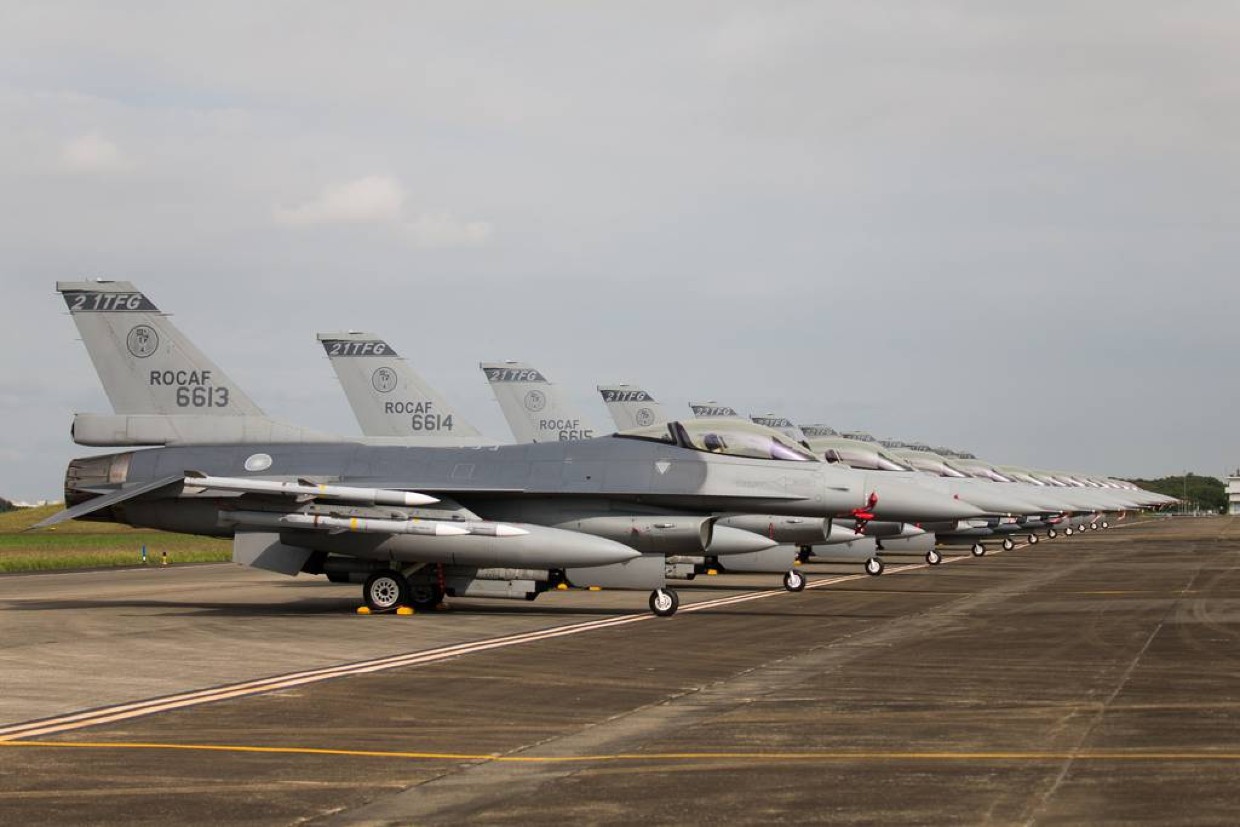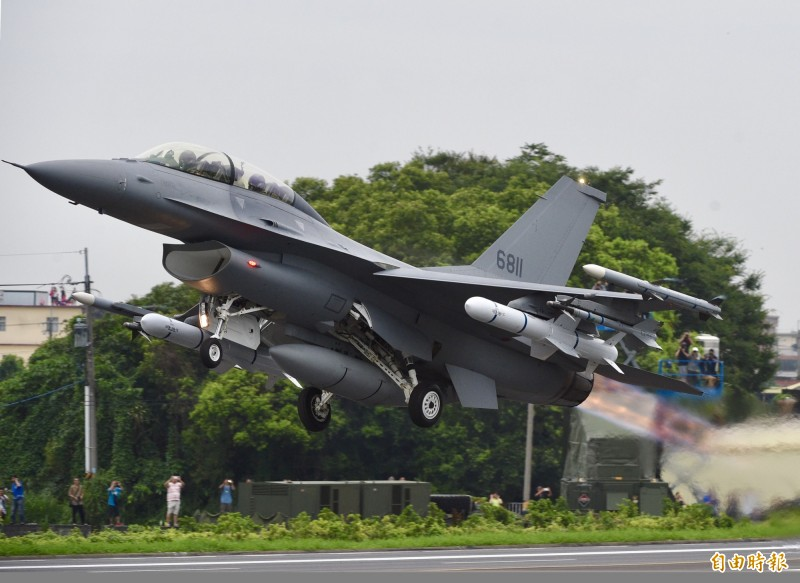Taiwan’s armed forces detected 62 aircraft and 7 ships of the Chinese People’s Liberation Army (PLA) approaching the self-governed island on Wednesday, the Taiwanese Defense Ministry said.
“7 PLAN [People’s Liberation Army Navy] vessels and 62 PLA aircraft around our surrounding region were detected today (August 31, 2022) until 1700 [09:00 GMT],” the ministry said on Twitter.
According to the ministry, 15 out of the detected aircraft crossed the so-called “median line” of the Taiwan Strait, which serves as an unofficial maritime border between the island and mainland China. These planes included nine J-16 strike fighter jets, one Y-8 electronic-warfare aircraft, one Y-8 anti-submarine aircraft, and four JH-7 fighter-bombers.
The armed forces monitored the situation and responded by sending an air patrol, issuing radio warnings, and deploying air defense missile systems, the ministry added.
The situation around Taiwan escalated after US House Speaker Nancy Pelosi’s visit to the island from August 2-3. The visit was followed by another US delegation led by US Senator Edward J. Markey on August 14 and the visit of Eric Holcomb, the governor of the US state of Indiana, on August 21, which triggered another wave of China’s military maneuvers near the island.
Taiwan became alienated from Beijing after becoming a stronghold of the Chinese Nationalist Party (the Kuomintang) that suffered defeat to the Communist Party in a civil war in 1949. The Chinese mainland and the island resumed business and informal contact in the late 1980s.

US Boosting Taiwan
US President Joe Biden plans to ask Congress to authorize a $1.1 billion arms transfer to the self-ruled island of Taiwan, including 60 anti-ship missiles and 100 air-to-air missiles, Politico revealed, citing sources.
The news of the new weapons comes amid rising tensions with China, which staged enormous military exercises in the sea and the air near the island in response to a visit by US House Speaker Nancy Pelosi this month.
Additionally, the US announced on Sunday that two of its warships had traversed the strait as part of a “freedom of navigation” exercise. However, the state-run Global Times tabloid, known for its frequently jingoistic and vehemently nationalist editorials, claimed the two cruisers’ presence posed “no actual threat to China’s security.”
The package will comprise 60 AGM-84L Harpoon Block II anti-ship missiles for $355 million, 100 AIM-9X Block II Sidewinder tactical air-to-air missiles for $85.6 million, and a surveillance radar contract extension for $655.4 million.
The Harpoon is an anti-ship missile that strikes warships; the Sidewinder is an air-to-air missile that targets jets. These two missiles could be equipped with Taiwan’s F-16 fighter jet. The surveillance radar in the package may be used to detect missiles.

The report said that the deal would require approval from the foreign affairs committees of Congress after the Biden administration formalizes the notification. The sale is anticipated to be approved by lawmakers.
The United States has theoretically remained committed to the ‘One China policy’ defined in the Taiwan Relations Act of 1979, which states that the United States will not establish official diplomatic relations with Taipei.
In recent years, there have been growing concerns that Beijing is preparing to annex Taiwan by force. In response, the United States and other Western countries have sought to enhance Taiwan’s defenses and commend its vibrant democracy, which contrasts sharply with Beijing’s authoritarianism.
The island nation has also taken moves to properly equip its defense forces in the face of Chinese aggression. Taiwan has responded by beefing up its defense preparedness, seeking to increase next year’s defense budget by 13% to $415.1 billion Taiwan New dollars ($13.7 billion).
Additional financing for acquiring fighter planes and other air and naval equipment will bring Taiwan’s defense budget up to 586.3 billion New Taiwan dollars ($19.3 billion) next year.
China’s Sabre-Rattling Against Taiwan
According to China’s state-run media, such efforts by the US are “ill-intended provocation” that will only increase tensions in the area. A Chinese defense analyst told the state-run media that the weaponry sale would not affect the Chinese People’s Liberation Army’s (PLA) absolute dominance over Taiwan’s armed forces.
The expert also noted that the PLA would be well-prepared to deal with them. The visit to Taiwan by Nancy Pelosi has already enraged China. Beijing considered the visit a significant breach of Chinese sovereignty, which prompted the PLA to take aggressive action in the shape of extensive military drills.

Experts believe the PLA maneuvers surrounding Taiwan earlier this month were a rehearsal for a force-reunification operation. The drills included island encirclement with warships and bombers and fire strikes with long-range rockets and conventional missiles.
A Beijing-based military expert who spoke to the Global Times on August 30 on the condition of anonymity said that the latest decision sent yet another incorrect message to the “Taiwan independence secessionist force” because the weapons chosen to be sold were intended to enable the island nation to use force to resist reunification.
The Harpoon missile launchers, F-16 fighter jets equipped with Sidewinder missiles, and surveillance radar will be among the first targets for the PLA, analysts predicted. He added that despite potential dangers, US weaponry would not alter the PLA’s absolute advantage in the military force equation across the Taiwan Straits.
The Chinese state media also boasts that China’s lethal fighter jets, J-16 and J-20, are superior to Taiwan’s F-16 jets.
It further claims that the US supplied more weapons to the island of Taiwan to advance its geopolitical objectives of limiting China and supporting its arms dealers at the expense of the Taiwanese government and island citizens.
Overall, the US-China power struggle has increased the likelihood that a significant conflict could break out in the region, with the Taiwan issue playing a pivotal role.
- Contact the author at ashishmichel@gmail.com
- Follow EurAsian Times on Google News




